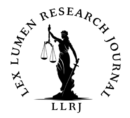Written by Jaya Mahaty Mandalaparthy,
Intern-Lex Lumen Research Journal,
June 2025
Marriage in India is not merely a personal commitment made by spouses to each other but an institution whose integrity and social importance is legally recognised and protected. When a crime like bigamy is discussed, specifically in this context, it becomes not only a crime against law but a betrayal of trust and a mark upon that very social institution. Remarrying when a person’s first marriage is still subsisting is thus criminalised under personal and criminal statutory provisions. The enforcement of such provisions is, however riddled with procedural complexities and evidentiary challenges, which place an undue burden of proof upon the aggrieved spouse. This blog examines such statutory framework, procedural guidelines and evidentiary burdens involved in prosecuting the act of bigamy in India.
Statutory Definition
The act of bigamy is defined in Section 82 of the Bharatiya Nyaya Sanhita, 2023,[1] previously under Sections 494 to 496 of the Indian Penal Code, 1860.[2] It is an act wherein a person, who is married and whose spouse is still alive, marries another person while their first marriage was subsisting. The Sanhita penalises this act with up to 7 years of imprisonment and a fine, at the discretion of the Court. In specific to personal laws, Section 17 of the Hindu Marriage Act, 1955 penalises the same, declaring the subsequent marriage void if any marriage has been solemnized during the lifetime of a person’s husband or wife’s lifetime.[3]
Bigamy is a non-cognizable and bailable offence. This entails that if a crime of bigamy has been committed, the police do not have the authority to arrest such accused or convicted person without a warrant and also require direction by the Court to investigate the matter.[4] The Supreme Court, in State of Haryana v. Bhajana Lal has reaffirmed that in non-cognizable cases, the police must seek approval of the Magistrate before investigating.[5] Grant of bail is a matter of right, and not at the discretion of the Court.[6] Further, it is a compoundable offence, meaning that at the discretion of the Court, the accused and victim may arrive at an agreement to withdraw the case and settle.[7]
Statutory Exceptions
Attraction of the offence of bigamy is subject to exceptions, as detailed in the provisions of the Sanhita.[8]
- Prior marriage has been declared void by a competent Court
If a person’s prior marriage has been declared void by a Court of competent jurisdiction, such person after marrying again do not attract provisions of bigamy. This prevents penalising a person whose marriage is no longer valid and remarries after such declaration.
- Prior spouse has not been heard from for a period of 7 years
If the prior spouse has been absent from their marital space for seven years or more and has not been heard from to believe they are alive, the subsequent marriage cannot be challenged on grounds of bigamy. Under Section 111 of the Bharatiya Sakshya Adhiniyam, previously Section 108 of the Indian Evidence Act, such person is legally presumed to have died.[9] However, for this exception to apply, the subsequent spouse must have been informed of the factual circumstances and such subsequent marriage should have been entered into in good faith. If the second marriage occurs without informing the subsequent spouse of such subsisting marriage, it attracts a higher quantum of punishment, of up to 10 years of imprisonment along with a fine.[10]
Procedure for Reporting and Investigation
For a non-cognizable offence, a Private Complaint Report is filed under Section 359 BNSS, previously Section 200 of the Code of Criminal Procedure, and the complainant is examined on oath.[11] In Avinash @ Pinto v. State of UP and Anr., it was ruled that a complaint of bigamy cannot be filed to the police directly and the Court must direct such investigation.[12] Section 198 CrPC (now Section 219, BNSS) provides that Court shall only take cognizance of offences against marriage if the aggrieved party makes a complaint regarding the same.[13] This interpretation was upheld in the Sanjay Kumar & Others v. State of U.P. & Others[14] and Simachal Mishra v. State of Orissa.[15] The complaint must be in writing and clearly mention details of the first marriage, proof that the second marriage occurred, and that it occurred while the first marriage was subsisting. It should make out a prima facie offence, which provides the Magistrate with reason to believe such a crime has occurred. The complainant must identify the appropriate jurisdiction for the case to be filed before, which is usually the Judicial Magistrate First Class under whose jurisdiction the second marriage allegedly took place or, the place where the offence came to the complainant’s knowledge.
The complainant, during their examination, may produce any preliminary witnesses. The Apex Court has ruled that the Magistrate must not act as a silent spectator at the time of recording of preliminary evidence but carefully scrutinise evidence brought on record and may question the complainant and the witnesses to realise the truthfulness of the allegations made.[16] The Magistrate may, if satisfied through the examination that a case exists, direct a police inquiry to further investigate the matter under Section 202 CrPC, or personally verify the facts through examination of evidence.[17] Summons are then issued to the accused person to appear before the Court.[18] However, if not satisfied, the Magistrate has the authority to dismiss the complaint.[19]
Evidentiary Requirement
The Indian legal system places the burden of proof upon the spouse alleging bigamy to prove or create a reasonable doubt that their husband or wife has married again during their lifetime while their marriage was subsisting. This means they must prove that to satisfy the legal requirements of the Section, demonstration of all necessary ceremonies need not be proved. Thus, proving that saptapadi has occurred, among other exhaustive details of ceremony, are not a reasonable expectation to have from the petitioner. Furthermore, truthfulness of allegations is not a matter to be looked into at the stage of cognizance and must only be looked into after commencement of trial proceedings.[20] Proof that may be submitted in this regard includes witness testimonies of people present during the second marriage,[21] photos of the second marriage, and any other evidence that suggests marriage between the two parties. Precedents have established that reliance can be placed upon witness testimonies and any other circumstantial evidence.[22]
Conclusion
In conclusion, while Indian law criminalises bigamy under personal and criminal laws, the enforcement of such laws remains tricky. Burdening the aggrieved spouse with proving such second marriage places an unreasonable burden upon them, creating an imbalance in the proceedings. It was noted by the Delhi High Court that one cannot expect a husband or wife getting married a second time during the subsistence of their first marriage would inform the first spouse of such actions.[23] Reforms must hence focus upon shifting such evidentiary burdens according to circumstances of the crime and empower Magistrates to order investigations in such regard. They must also ensure that presiding officers have the discretion to infer second marriage upon circumstantial evidence to prevent abuse of process. Such legal loopholes may be used by spouses committing bigamy to circumvent the law and prevent their aggrieved spouses from availing legal remedies, and lead to the law failing to safeguard the rights and dignity of the aggrieved spouse.
[1] Bharatiya Nyaya Sanhita, 2023, §82.
[2] Indian Penal Code, 1860, §494, 495, 496.
[3] Hindu Marriage Act, 1955, §17.
[4] Code of Criminal Procedure, 1973, §2(c); Bharatiya Nagarik Surakhsa Sanhita, 2023, §2(1)(g).
[5] State of Haryana v. Bhajana Lal, 1992 Supp (1) SCC 335
[6] Code of Criminal Procedure, 1973, §2(a); Bharatiya Nagarik Surakhsa Sanhita, 2023, §2(1)(c).
[7] Code of Criminal Procedure, 1973, §320, Bharatiya Nagarik Surakhsa Sanhita, 2023, §359.
[8] Bharatiya Nyaya Sanhita, 2023, §82(1).
[9] Bharatiya Sakshya Adhiniyam, 2023, §111; Indian Evidence Act, 1972, §108.
[10] Bharatiya Nyaya Sanhita, 2023, §82(2); Indian Penal Code, 1860, §495.
[11] Code of Criminal Procedure, 1973, §200, Bharatiya Nagarik Surakhsa Sanhita, 2023, §223.
[12] Avinash @ Pinto v. State of UP and Anr., Applications u/s 482 No.- 11625 of 2023.
[13] Code of Criminal Procedure, 1973, §198; Bharatiya Nagarik Surakhsa Sanhita, 2023, §219.
[14] Kumar & Others v. State of U.P. & Others, CRIMINAL REVISION No. – 3806 of 2006, ¶7.
[15] Simachal Mishra v. State of Orissa, 2001(II)OLR381, ¶6.
[16] Pepsi Foods Ltd. & Anr. v. Special Judicial Magistrate & Ors., AIR 1998 SUPREME COURT 128, ¶28.
[17] Code of Criminal Procedure, 1973, §202, Bharatiya Nagarik Surakhsa Sanhita, 2023, §225.
[18] Code of Criminal Procedure, 1973, §204, Bharatiya Nagarik Surakhsa Sanhita, 2023, §227.
[19] Code of Criminal Procedure, 1973, §203, Bharatiya Nagarik Surakhsa Sanhita, 2023, §226.
[20] K Neelaveni v. State, (2010) 22 SCC 607, ¶14.
[21] Padupullaparthi Mutyala Paradeshi Accused v. Padupullaparthi Subbalakshmi and Anr., 1962CRILJ308; Mayaben Maganbhai Rabari v. State of Gujarat, R/CR.MA/16383/2016, ¶4.
[22] Pooja Sharma Bajaj v. Ashok Bajaj, 2024 DHC 21.
[23] Pooja Sharma Bajaj v. Ashok Bajaj, 2024 DHC 21, ¶54.


